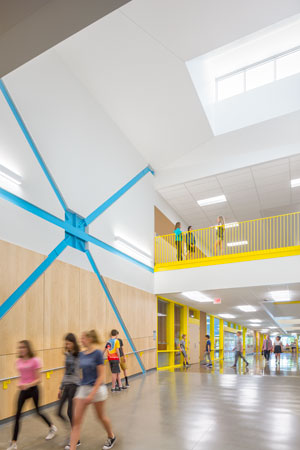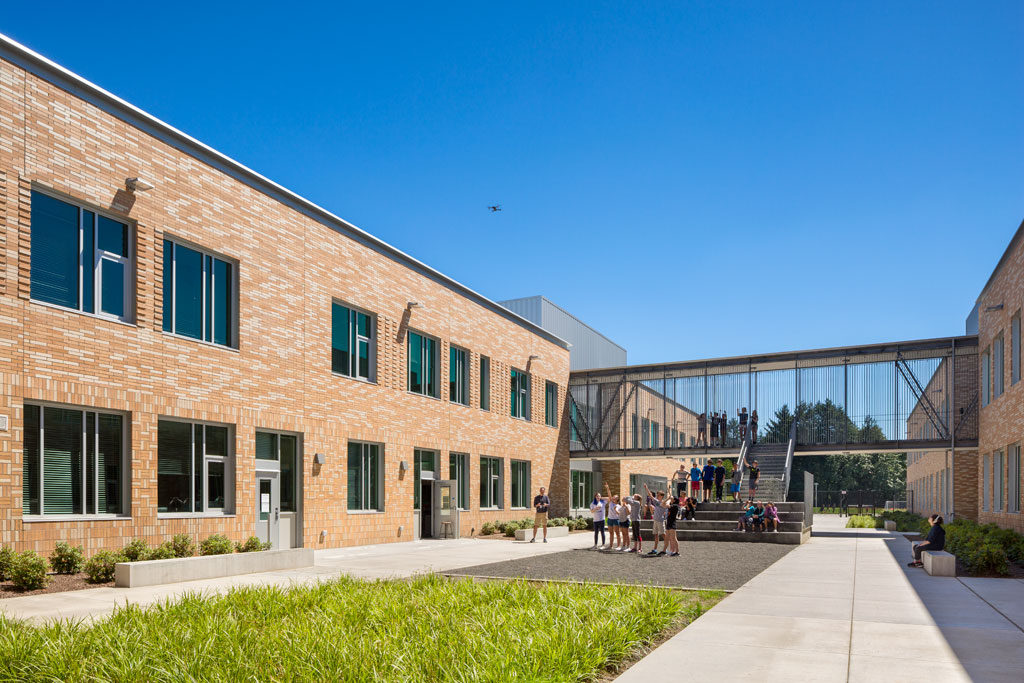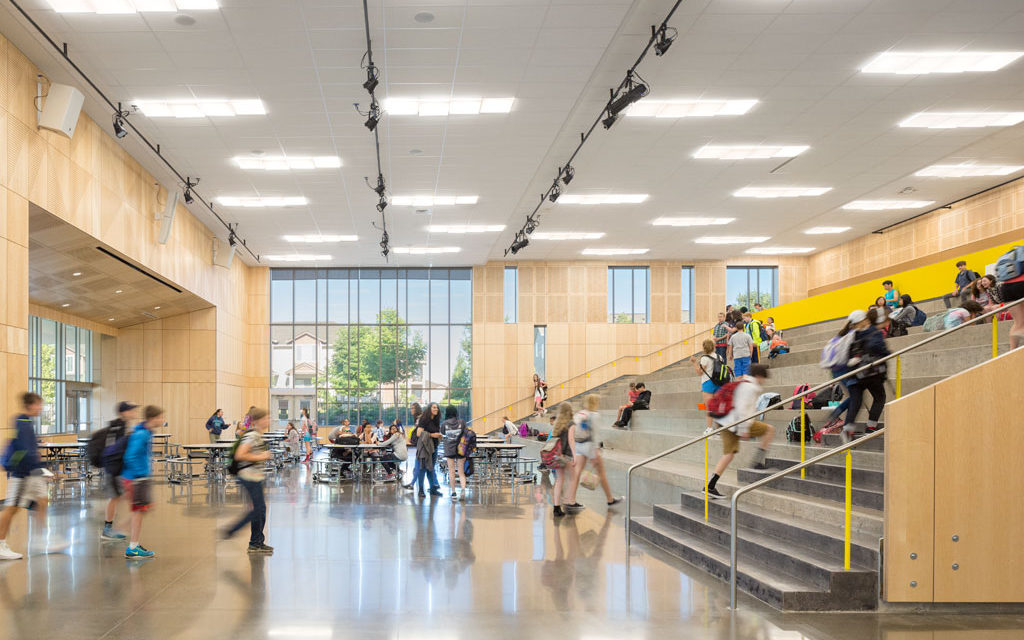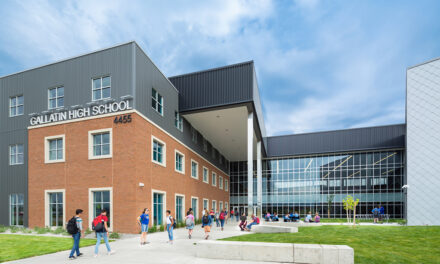Typically, ensuring safety in public schools is a matter of modifying human behavior. From playground bullying to gang activity to more violent crime, these troubling issues are being addressed through concrete, preventative actions and strategies. But in many cities and towns, there’s another danger, one that is to a great extent out of their control. For schools located in regions susceptible to natural disasters, providing protection rises to a higher—and broader—concern.
In 1999, the state of Oregon released geological hazard maps showing Cannon Beach and Gearhart elementary schools, Broadway Middle School, and Seaside High School would all be severely damaged in case of a major earthquake/tsunami event. Subsequently, in 2013, the Oregon Seismic Safety Policy Advisory Commission published the Oregon Resilience Plan (OPR), a report for the state legislature that outlines several paths to reduce risk, increase resiliency, and improve recovery from such natural disasters. The OPR’s survey of more than 2,000 K-12 educational facilities—buildings of various structural types, sizes, and vintages, including numerous structures that are more than a century old—revealed that 47% were rated as Very High to High for risk of collapse in the event of a severe earthquake. This statistic underscores the urgency of why many school districts are pursuing seismic improvement programs for their buildings.

“The New Middle School at Beaverton School District contains seismic bracing designed to withstand a major earthquake. One of those steel x-braces was left exposed, to allow students to learn how the building is engineered to withstand an earthquake.” Credit: © Josh Partee
Throughout the Pacific Northwest, communities contend with earthquakes inland and tsunamis on the coast. To withstand a catastrophe of this kind, school districts are taking action to structurally upgrade their facilities, in some cases going beyond current building code standards.
One example of this can be found in Ocosta, Washington, a small logging and fishing coastal community that is home to North America’s first vertical tsunami evacuation shelter. Located atop the local school’s new gymnasium, the taxpayer-funded facility will be open 24 hours a day, seven days a week and can shelter up to 2,000 people in the event of an earthquake and tsunami that follows.
A critical cause, but at what cost?
Funding for these upgrades is often supplied through school bonds, measures that must be approved by local voters.
Because of the expense these projects often incur, sticker-shock can be a factor in whether or not a bond is approved; whether intentionally or by oversight, the cost to increase safety and resiliency is often factored in after the bond passes. Such an unwelcome fiscal surprise can be seen as a political bait-and-switch ploy, alienating the public and jeopardizing future support for similar projects.
But occasionally revised measures get through, in a better-late-than-never scenario. In 2016, Oregon’s Seaside School District voters approved a $99.7 million bond to move three schools out of the tsunami inundation zone—three years after a $128.8 million-dollar proposal failed. The scaled-back plan eliminated improvements that were seen as not wholly germane to the purpose of the bond, including a new auditorium, covered bleachers, a varsity playing field, and long-term emergency shelters.
Another reason voters may resist the measure: the payback isn’t immediately perceived. If the issues regarding resilience are presented in the forefront of a bond, and not buried in the fine print, the priorities are clear. Therefore, honestly framing the scope of the work and presenting its budget from the outset is the best strategy.
A complete and accurate cost analysis forms the basis for this. Several of Oregon’s largest school districts (including Portland Public Schools and Beaverton School District) have worked with Rider Levett Bucknall (RLB) to help create realistic and accurate budget frameworks for these kinds of school construction projects before going to bond or to help recalibrate the budgets on a successful bond application. Over the course of more than two decades, our firm has provided cost estimating and management services for more than 40 school improvement projects to these districts, guiding them through pre-bond budgeting to design milestone estimating and change order management—a purposeful process which ultimately ensures that the user requirements are maximized within limited available funds.

“The New Middle School at Beaverton School District contains seismic bracing designed to withstand a major earthquake. One of those steel x-braces was left exposed, to allow students to learn how the building is engineered to withstand an earthquake.” Credit: © Josh Partee
From safe schools to community shelters
While compliance with current building codes is a minimum goal, some school districts are looking to expand their role beyond the safety of students and faculty and are voluntarily stepping up their seismic standards so that their schools can function as a shelter to provide a full range of post-disaster relief services to the entire community.
The Beaverton School District has taken on that challenge, passing a bond measure that includes the construction of seven new schools. Using the ORP as a guide, these schools will act as a demonstration project to explore how they can be used as shelters following a disaster, and be able to re-open in a timely manner—72 hours instead of the 18 months allotted for resuming core educational functions—to aid recovery efforts.
The American Red Cross has established criteria for minimum emergency shelter requirements. As outlined in the ORP, these are secure facilities that can be naturally ventilated, get people out of the weather and keep them warm. Beyond that, the availability of electricity for lighting and cooking, water and removal of waste water would be significant additions that would improve the efficiency and livability of the shelter.
Even with new, ground-up construction approved by the voters, incorporating all of these features into a school building requires extensive integration with a community’s infrastructure. To manage this, RLB teamed with the Beaverton School District to create a long-term, escalated budget model that benchmarks the entire construction program. For a school district, cost modeling can provide the transparency, clarity, and direction that get a bond project off on the right financial foot, putting a resilient school improvement program on safe and solid ground.
About the author
 Graham Roy, FRICS
Graham Roy, FRICS
Graham Roy is executive vice president at Rider Levett Bucknall and oversees operations of the firm’s West Coast offices. He joined the company in 1995 and brings more than three decades of professional experience in construction cost management to the firm. As a professional quantity surveyor, Graham has provided cost, project, and facilities management on numerous education, healthcare, military, hospitality, library, commercial, and residential projects in both the public and private sectors.





